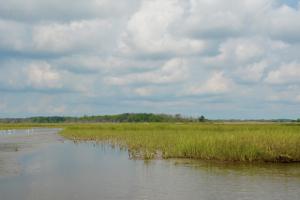Prime Hook refuge shows signs of renewal
One of the largest marsh restoration projects ever attempted on the East Coast is finally underway. After years filled with studies, public hearings, research and permitting, work has started on a $38 million project to replenish the Prime Hook National Wildlife Refuge marsh and beachfront.
Three dredges have started Phase 1 of the project to dig out channels to allow free flow of water from the Broadkill River in the south and Slaughter Canal and Prime Hook Creek in the north. It's that water moving through the channels that will provide the foundation for marsh restoration. Dredging will be ongoing 16 hours a day, six days a week and take about a year.
The increased water exchange and flow will help lower the water level within the refuge by reducing the amount of water stacked in the existing refuge units. The exposed mudflats will provide an area for marsh grass to grow. It's hoped that growth will occur naturally but aerial seeding is not out of the question, said Al Rizzo, project leader for the Coastal Delaware National Wildlife Refuge Complex.
Most of the work is taking place in Unit 2, the most decimated of the four refuge impoundments. Nearly all of the marsh in the unit has been destroyed by saltwater intrusion from the Delaware Bay. Storms have opened a series of breaches along the coastline of Unit 2.
Thousands of acres of what used to be freshwater marsh have been changed to open water, drowning out marsh plants.
Rizzo said the ultimate goal of the project is return the refuge to a functioning saltwater marsh – with smaller sections of freshwater marsh – as it was a half century ago.
“We've seen some natural growth the last one to two years,” Rizzo said. “We are on the right track.”
Phase 2 of the project – set to begin in early October – will be the rebuilding of about 7,000 feet of beachfront north of Primehook Beach with 1.1 million cubic feet of Delaware Bay sand. More than 10,000 feet of sand fence will be installed in three rows to provide stability. The project includes the planting of 20 acres of spartina and another 38 acres of other vegetation, including beach grass. This phase will be coordinated by the U.S. Army Corps of Engineers.































































